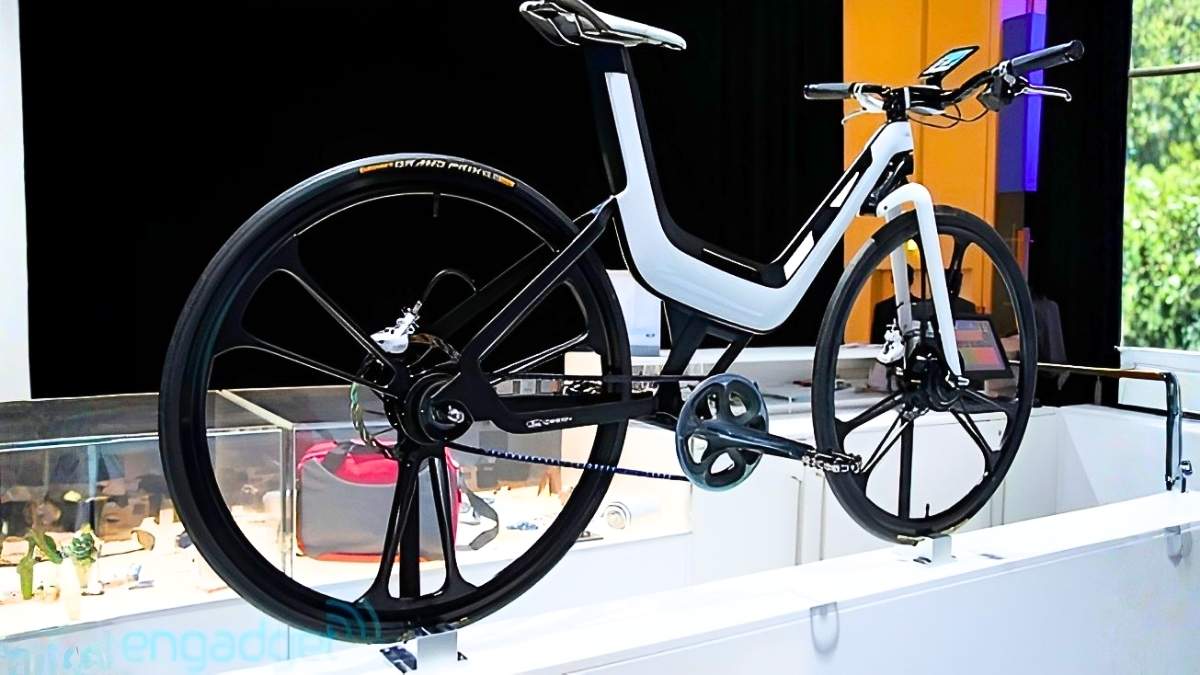Ford has always been known for pushing ideas that challenge the boundaries of traditional mobility. From reimagining personal transport to integrating smart technology into vehicles, the company has consistently explored what future commuting could look like. One of the more surprising and innovative concepts it presented to the world was an e-bike powered directly by a smartphone. That smartphone was none other than the Samsung Galaxy S II, a device that played an important role in early mobile technology evolution. Bringing a carmaker and a smartphone together might sound unusual, but Ford’s e-bike concept showed how smart devices could be used beyond communication, becoming a central hub for mobility. This collaboration between Ford and Samsung demonstrated how technology could merge with alternative transportation to offer not just convenience but also efficiency, sustainability, and smart connectivity.
How the Samsung Galaxy S II Became the Power Hub
At the heart of the concept is the Samsung Galaxy S II, which serves as the digital brain of the e-bike. Instead of simply being an accessory, the phone controls essential features such as speed regulation, battery monitoring, route navigation, and ride analytics. The phone is mounted on the handlebar and communicates with the bike’s electric motor and sensors. This integration transforms the bike into an intelligent mobility device capable of adapting to different riding conditions. The Galaxy S II was chosen for its strong processing power, AMOLED display, and efficient battery life. Although today’s phones are far more advanced, the use of this smartphone back then was a forward-thinking idea. It proved that even compact devices could handle tasks traditionally reserved for dedicated vehicle systems. Using a smartphone also made the e-bike lighter and less mechanically complex, since several components were replaced by digital ones. The setup made the bike highly customizable because new apps or updates could instantly change how it performed.
The Technology Behind the E-Bike Concept
Ford’s e-bike concept was built around lightweight materials and a simple yet advanced control system. The frame used aluminum and carbon fiber elements to keep the bike easy to handle while still being strong enough for daily commuting. A compact electric motor assisted pedaling and helped riders travel efficiently without putting in excessive physical effort. Sensors installed throughout the bike worked together with the smartphone to provide real-time feedback. These included a torque sensor, pedal rotation sensors, wheel speed sensors, and braking indicators. The Galaxy S II displayed this data through a dedicated interface that was easy to read even while riding. The combination of sensors and electric power meant that the bike could automatically adjust assistance levels based on how much force the rider applied. This prevented unnecessary battery drain and made the ride smoother. The system also allowed riders to track distance, average speed, calorie burn, and predicted arrival time. In essence, the e-bike became a smart partner for everyday travel.
A Look at Design and Usability
Ford’s design for the e-bike demonstrated a blend of simplicity and futuristic appeal. The frame had clean lines, and the placement of the smartphone gave it a tech-forward aesthetic. The designers made sure that the bike appealed not only to avid cyclists but also to city commuters who needed a reliable and stylish solution for short-distance travel. The compact wheels and light frame made it easy to carry into buildings or public transport. Since the electric motor provided supportive power, riders could travel long distances or tackle uphill routes without feeling overly tired. The smartphone interface improved usability by removing the need for complicated bike controls. Everything from switching ride modes to checking battery health could be done through simple touches on the screen. This level of control was something that most bikes at the time did not offer. The convenience factor alone made the concept stand out among other mobility prototypes.
Why This Concept Mattered for Future Mobility
The collaboration between Ford and Samsung was more than just a promotional experiment; it carried meaningful potential for the future of urban transport. As cities became more crowded, the need for lightweight, eco-friendly commuting solutions grew. The e-bike concept showed that technology could help fill that need. By using a smartphone as the main control system, Ford illustrated how personal devices could become a central part of smart transportation. The bike fit into a larger vision of interconnected mobility where cars, bikes, and public transport systems communicate seamlessly. Even though this particular concept never moved into mass production, its ideas have influenced many modern e-bikes that use phone apps for tracking and control. It proved that smart devices could reduce hardware complexity and open doors to more sustainable, user-friendly mobility innovations.
Key Highlights
• Ford introduced an innovative e-bike concept controlled entirely by the Samsung Galaxy S II
• The smartphone served as the main interface for speed, battery monitoring, and navigation
• Lightweight materials like aluminum and carbon fiber improved usability and portability
• Advanced sensors provided real-time ride data and automatic motor assistance
• The concept demonstrated how smart devices could shape the future of urban mobility
Final Words
Ford’s e-bike concept powered by the Samsung Galaxy S II was a bold step in rethinking everyday transportation. It blended technology with eco-friendly mobility in a way few companies had attempted at the time. Although it remained a concept, the ideas it introduced have influenced modern electric bikes and smart commuting solutions. By turning a smartphone into the control center of a vehicle, Ford showed how personal tech devices could reshape mobility. This concept remains a reminder of how innovation can come from unexpected collaborations and how the future of transportation may be shaped by the devices we carry with us every day.
